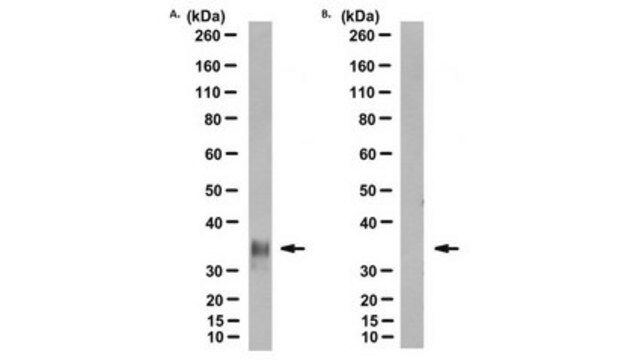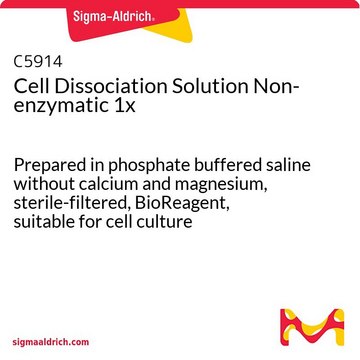MABN2285M
Anti-Prion Protein Antibody, clone POM1
clone POM1, from mouse
Synonym(s):
Major prion protein, PrP, PrP27-30, PrP33-35C, CD230
About This Item
Recommended Products
biological source
mouse
Quality Level
antibody form
purified immunoglobulin
antibody product type
primary antibodies
clone
POM1, monoclonal
species reactivity
mouse, human
packaging
antibody small pack of 25 μg
technique(s)
immunofluorescence: suitable
immunohistochemistry: suitable
immunoprecipitation (IP): suitable
western blot: suitable
isotype
IgG1κ
NCBI accession no.
UniProt accession no.
target post-translational modification
unmodified
Gene Information
mouse ... Prnp(19122)
General description
Specificity
Immunogen
Application
Neuroscience
Immunofluorescence Analysis: A representative lot detected Prion Protein in Immunofluorescence applications (Kuffer, A., et. al. (2016). Nature. 536(7617):464-8).
Immunohistochemistry Analysis: A representative lot detected Prion Protein in Immunohistochemistry applications (Polymenidou, M., et. al. (2008). PLoS One. 3(12):e3872).
Immunoprecipitation Analysis: A representative lot detected Prion Protein in Immunoprecipitation applications (Polymenidou, M., et. al. (2008). PLoS One. 3(12):e3872).
ELISA Analysis: A representative lot detected Prion Protein in ELISA applications (Polymenidou, M., et. al. (2008). PLoS One. 3(12):e3872).
Quality
Western Blotting Analysis: 0.5 µg/mL of this antibody this antibody detected PrP in Brain homogenate from a Tga20 mouse overexpressing Prnp versus brain homogenate from a ZH3/ZH3 control mouse lacking Prnp.
Target description
Physical form
Storage and Stability
Other Notes
Disclaimer
Not finding the right product?
Try our Product Selector Tool.
Storage Class Code
12 - Non Combustible Liquids
WGK
WGK 1
Certificates of Analysis (COA)
Search for Certificates of Analysis (COA) by entering the products Lot/Batch Number. Lot and Batch Numbers can be found on a product’s label following the words ‘Lot’ or ‘Batch’.
Already Own This Product?
Find documentation for the products that you have recently purchased in the Document Library.
Our team of scientists has experience in all areas of research including Life Science, Material Science, Chemical Synthesis, Chromatography, Analytical and many others.
Contact Technical Service








